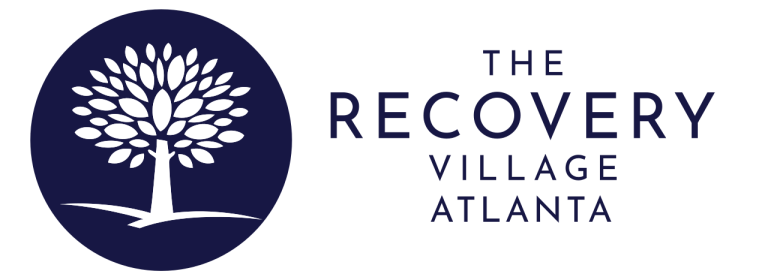Dual diagnosis can be difficult to identify and treat, as addiction and mental health disorders often share many similar symptoms.
People can struggle with drug or alcohol addiction and a mental health condition at the same time. This is known as having a dual diagnosis, or co-occurring disorders. Those with a dual diagnosis require special treatment, and knowing how to identify if you have a dual diagnosis can help you get the best treatment possible.
What Is Dual Diagnosis?
Dual diagnosis is when someone is diagnosed with a mental health disorder and a substance abuse disorder at the same time. These two diagnoses exist simultaneously, which makes treatment more complex for both disorders.
People who have a dual diagnosis experience the symptoms of both disorders in greater extremes. For example, someone with bipolar disorder and an alcohol addiction may have more frequent and erratic highs and lows.
Co-Occurring Disorders
Dual diagnosis is now more commonly known as a co-occurring disorder, or COD. COD means that a person has both a substance use disorder and a mental health disorder. It is common for people with substance use disorder (SUD) to be diagnosed with a co-occurring mental health disorder. Co-occurring disorders that are often seen with SUD include:
New Year. Real Recovery.
The pressures of the season are real. Find lasting peace and expert support.

- Anxiety disorders
- Depression
- ADHD
- Bipolar disorder
- Personality disorders
- Schizophrenia
Although addiction and mental health disorders often occur together, it does not mean one condition causes the other. However, there are common factors that can increase a person’s risk of developing substance use disorder and a co-occurring mental health condition. These include:
- Family history
- Using substances as a way to cope with mental health symptoms
- Changes in the brain caused by addiction (which can trigger mental health symptoms like depression or anxiety)
Mood Disorders
Mood disorders are a group of mental health diagnoses that includes all types of depression and bipolar disorders. Mood disorders can occur in both children and adults, but they are harder to diagnose in children because they are not able to express their emotions as easily as adults.
Mood disorders can happen for a lot of different reasons. They are genetic and tend to run in families, and they can also occur due to life events and chemical imbalances in the brain.
Mood disorders include:
- Major depression
- Dysthymia
- Bipolar disorder
- Mood disorder related to another health condition
- Substance-induced mood disorder
Anxiety Disorders
Anxiety disorders are characterized by intense fear and anxiety that does not go away easily and has a negative impact on someone’s life. There are different types of anxiety disorders, including:
- Generalized anxiety disorder (GAD)
- Panic disorder
- Social anxiety disorder
- Phobia-related disorders
- Separation anxiety disorder
Post-Traumatic Stress Disorder (PTSD)
Post-traumatic stress disorder, or PTSD, is a mental health disorder that develops after a traumatic event. PTSD normally occurs after a specific event, such as a car accident, an assault or being involved in war. PTSD can cause someone to relive their traumatic experience through flashbacks and can lead to extreme anxiety or fear related to the traumatic event.
Attention Deficit Hyperactivity Disorder
Attention-deficit hyperactivity disorder, or ADHD, is diagnosed when someone has constant patterns of attention deficits or hyperactivity that interfere with everyday life functioning. Someone with ADHD experiences symptoms of inattention, hyperactivity and impulsivity. ADHD is usually diagnosed in late childhood but can also be diagnosed in adults. It is also more common in males.
Eating Disorders
Eating disorders are disturbances in eating habits that are caused by a person’s thoughts and feelings. Eating disorder behavior can be potentially life-threatening and very severe. Eating disorders are not a lifestyle choice; rather, they are a serious mental health diagnosis that can be very difficult to treat.
There are a few different eating disorders that are categorized by various habits surrounding eating. These include:
- Anorexia nervosa
- Eating disorder not otherwise specified
- Avoidant restrictive food intake disorder
- Bulimia nervosa
- Binge eating disorder
Schizophrenia
Schizophrenia is a mental illness that impacts the way someone thinks, feels and experiences reality. It also affects how someone behaves, and it may seem like someone with schizophrenia is often out of touch with reality.
Someone with schizophrenia experiences psychotic symptoms such as hallucinations, delusions, thought disorder and movement disorder. Schizophrenia is often associated with negative cognition and behavior and sometimes results in violence.
Co-Occurring Disorder Risk Factors
Co-occurring disorders can happen for many different reasons. The risk factors that can lead to the development of a co-occurring disorder are both genetic and environmental. These factors can include:
- Family history of SUD or mental health disorder
- Exposure to drugs or substances, viruses or toxins prenatally
- Gender (men are at higher risk for co-occurring disorders than women)
- Pre-existing SUD or mental health disorder
- Life events
- Trauma
Diagnosing Co-Occurring Disorders
The best way to diagnose co-occurring disorders is to evaluate whether a person with SUD may also have mental health symptoms (and vice versa). If someone enters treatment for SUD, a clinician should also evaluate them for any mental health disorders. People should also be evaluated for substance abuse signs and symptoms when seeking mental health treatment.
Signs of Co-Occurring Disorders
Signs and symptoms related to co-occurring disorders can include:
- Using substances to cope with emotions
- Withdrawal from family or friends
- Changes in personality or behavior
- Withdrawal from normal activities
- Insomnia
- Malnutrition
- Poor hygiene
- Fatigue
- Paranoia
- Inability to focus
- Confusion
- Aggression
- Mood swings
- Prolonged sadness or depression
- Anxiety
- Suicidal ideation or attempts
Types of Dual Diagnosis Treatment
Dual diagnosis treatment can be complex, as it requires addressing multiple symptoms and diagnoses simultaneously. Dual diagnosis treatment can include many different programs and approaches, including residential care, therapy, counseling, peer support meetings and more.
Residential Treatment
Residential treatment is an intensive program that provides 24/7 care for those who need a higher degree of support. residential treatment can include things such as medical detox, various types of mental health therapies, nutritional support, medical support and medication-assisted treatment. Residential treatment may be a good option for someone who is just starting out in their recovery.
Individual and Group Therapy
Individual and group therapies are typically offered at most levels of care. Individual therapy involves one-on-one sessions with a licensed mental health professional over a set period of time, depending on the patient’s needs. Group therapy can involve either an open or closed group and usually focuses on a skill, such as reducing anxiety or stopping the use of a substance. Individual and group therapy can teach someone new coping skills so they can continue their recovery.
Medication-Assisted Treatment
Medication-assisted treatment (MAT) uses medications combined with behavioral therapies to treat substance use disorders. MAT is typically used to treat someone who is addicted to substances such as opioids or prescription painkillers. The prescribed medication given in MAT helps to normalize brain chemistry. It works by blocking the effects of alcohol and opioids and reducing cravings to help someone abstain from substances.
Cognitive Behavioral Therapy
Cognitive behavioral therapy is a type of behavior therapy that focuses on changing someone’s thoughts and feelings in negative situations, which helps to change maladaptive behavior. For SUD and mental health disorders, cognitive behavioral therapy can help someone identify their triggers and the negative thoughts and feelings that accompany their behaviors. A therapist helps a patient learn healthier coping mechanisms to replace the behaviors typically used.
Peer Support Groups
Peer support groups are gatherings of people who share the same mental health or substance use disorders. These groups typically meet monthly and allow members to come together to provide insight and support to one another. Peer support groups are overseen by a trained professional who helps to facilitate the group. This type of setting allows those with substance abuse or mental health disorders to talk about their experiences without judgment and feel a sense of community and support.
Dual Diagnosis Treatment in Atlanta, GA
The Recovery Village Atlanta is an accredited facility with licensed medical and mental health professionals who are experienced in treating addiction and co-occurring disorders. We offer a full continuum of addiction treatment and care, including:
- Medical detoxification
- Residential treatment
- Partial hospitalization programming
- Medication-assisted treatment (MAT)
- Dual diagnosis treatment
- Aftercare
- Teletherapy
If you or someone you love is struggling with substance use and a co-occurring mental health condition, help is available at The Recovery Village Atlanta. Contact us today to learn more about treatment programs that can work well for your needs.


